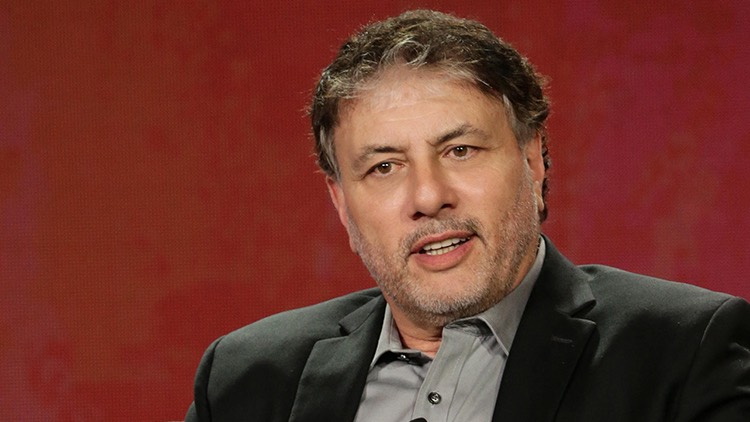The Five Spot: Gary Levine

In late 2016, Gary Levine marked a year in his new position. A key programming initiative—perhaps the key programming initiative—for Showtime in 2017 is David Lynch’s remake of Twin Peaks, which starts up May 21. Levine was working in development at ABC in the early ’90s when the original Twin Peaks captured the nation’s attention, and he’s curious what might happen with the show in the social media age.
Another big swing is I’m Dying Up Here, a Jim Carrey-produced series about comedians trying to make it in Hollywood in the ’70s. Levine is fascinated by comics’ high-wire act. “No one writes for you, you have no costars, no set,” he says. “It’s just you and your mic and your wits.”
Yet Levine is not unfamiliar with performing. He is a trained cantor, and had a cameo as one in an episode of the Showtime comedy Episodes. He spoke with B&C deputy editor Michael Malone at the comedy club Ice House in Pasadena, Calif., during the TCA winter press tour. An edited transcript follows.
What is the common thread among Showtime series?
I take pride in the fact that there aren’t obvious similarities between them—you never want to get trapped in a formula. I love the range of shows—the slate goes from Shameless to Billions and everything in between. I hope that deep in the DNA of each series there’s something that says why it’s on Showtime—the audacity, the risks it takes, the surprise, the depth, the complexity, all those things. We work very hard to be sure there’s a reason a show is on Showtime.
What makes I’m Dying Up Here right for you?
We’re always looking for ways to tell dramatic stories and show characters in extreme situations. Television has traditionally done that with cops and doctors, where you have instant extremis. A SWAT team, that’s extreme. But it’s much more interesting to me to get inside the psyche of stand-up comics. That is extreme—to get up there and challenge an audience, dare them not to laugh at you. I am in awe of those people. And they have such a bloody development period. They bomb, they bomb, they bomb, they bomb. And yet they persevere, and some of them go to really interesting places. The idea of doing an ensemble of people who are so extreme and are both really funny and, a lot of them, really in pain—that to us was a really ripe area.
What does Jim Carrey bring to the show?
He is of that world, and in some ways the barometer of authenticity. The nicest thing we heard was after he watched the episodes, he talked about how real it felt. He knows from whence he speaks. He’s a great cheerleader for the cast. They try to recapture the things he did.
When something like Roadies doesn’t catch on, is it a blow to morale?
Of course. But we haven’t had many of those—our shows live quite a long time. We really believed in the [Roadies] concept, and we really loved the creative auspices: Cameron Crowe, Winnie Holzman, J. J. Abrams—the three kings. We’re sad it didn’t work out the way we hoped, but you can’t be afraid of missing when you take big swings.
Broadcasting & Cable Newsletter
The smarter way to stay on top of broadcasting and cable industry. Sign up below
How do you manage the high expectations for Twin Peaks?
It’s a phenomenon unto itself. To me, Twin Peaks is already a success because we brought it to life again. We gave David the canvas to put his portrait of Twin Peaks 2017 in front of the public. That, to me, is a victory.
Michael Malone is content director at B+C and Multichannel News. He joined B+C in 2005 and has covered network programming, including entertainment, news and sports on broadcast, cable and streaming; and local broadcast television, including writing the "Local News Close-Up" market profiles. He also hosted the podcasts "Busted Pilot" and "Series Business." His journalism has also appeared in The New York Times, The L.A. Times, The Boston Globe and New York magazine.

